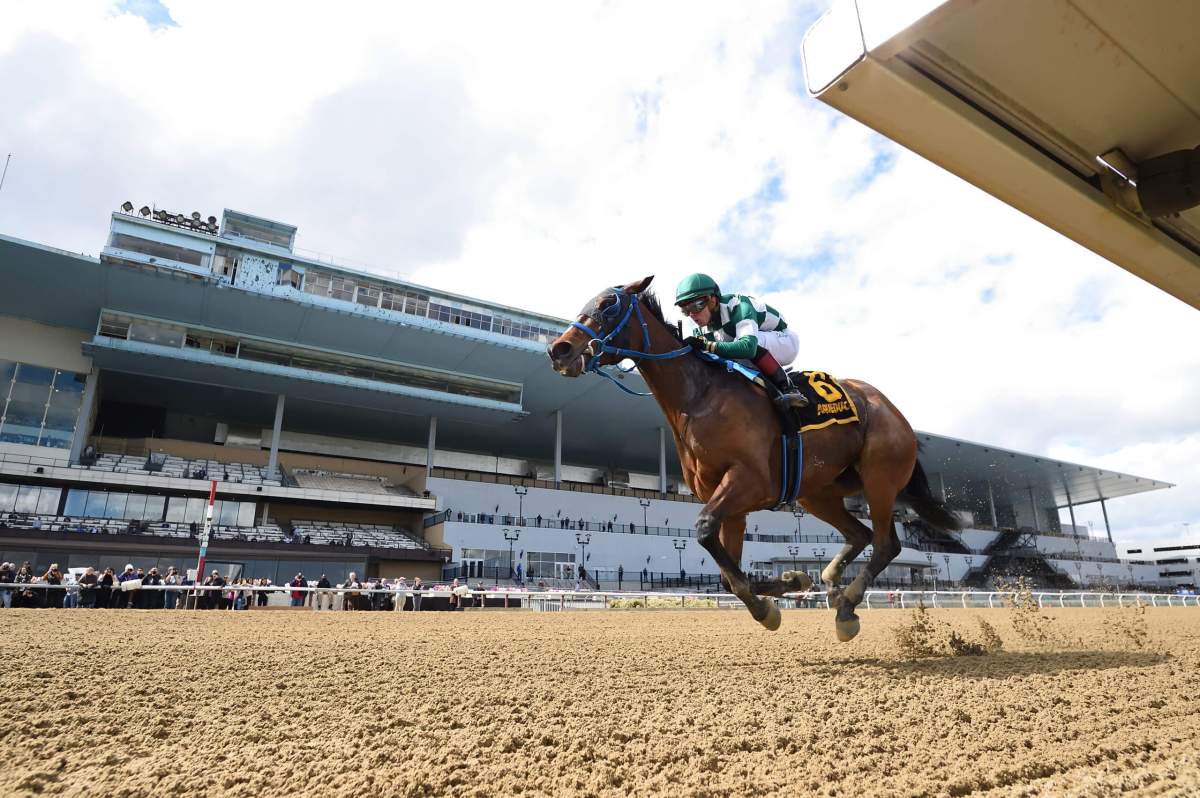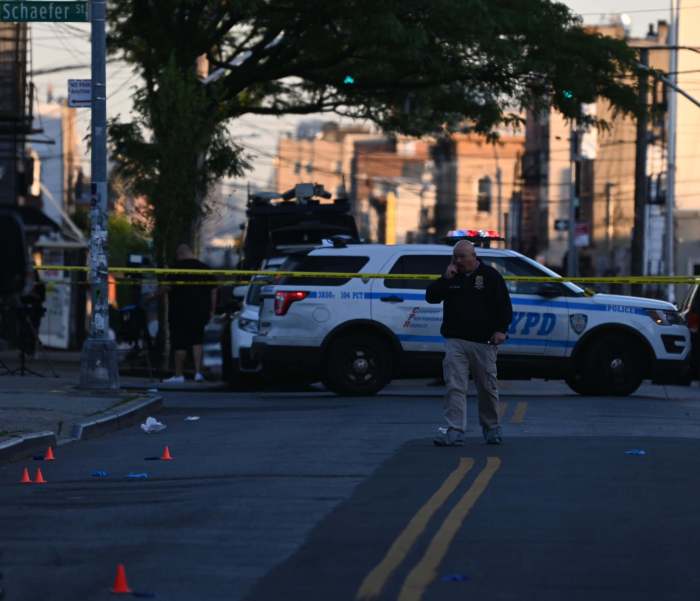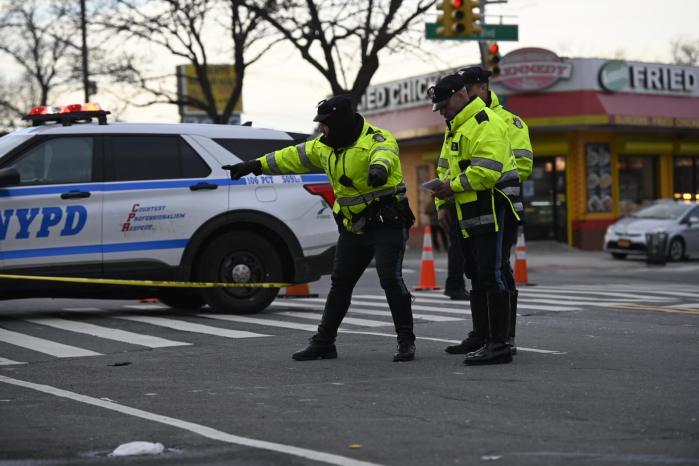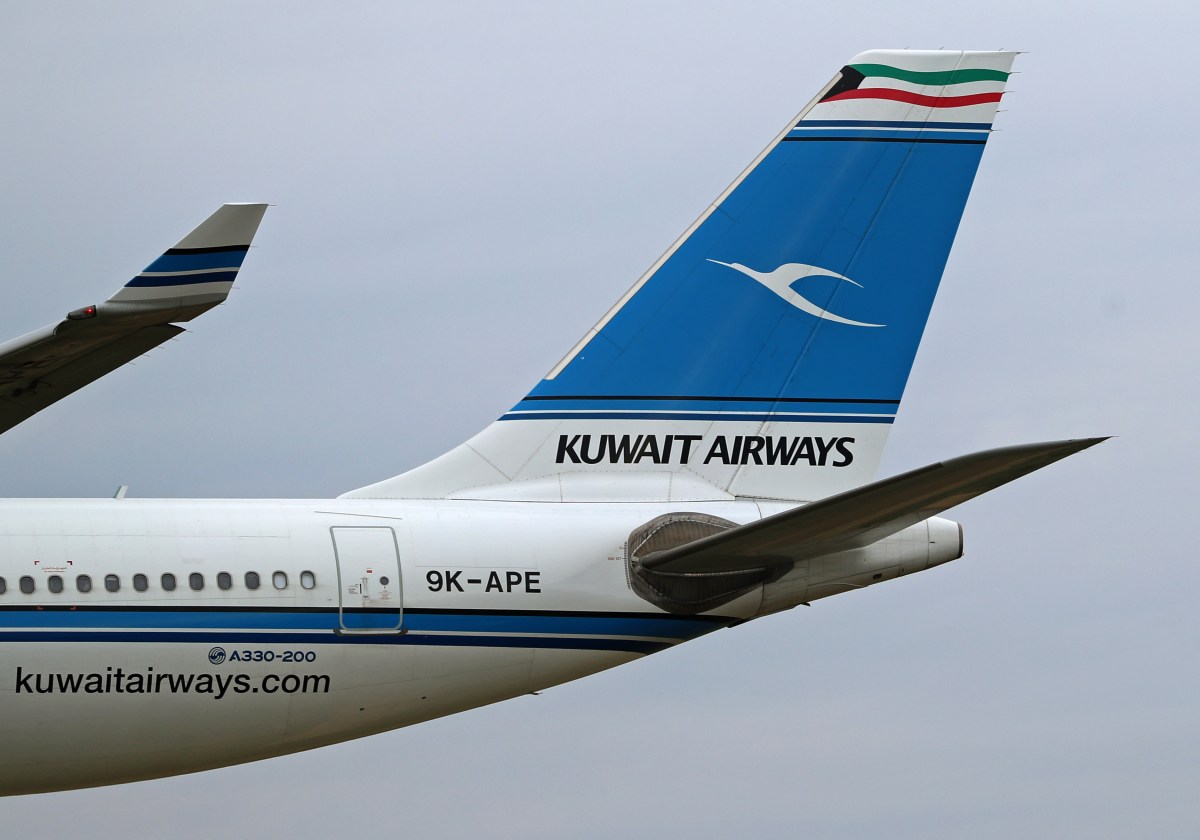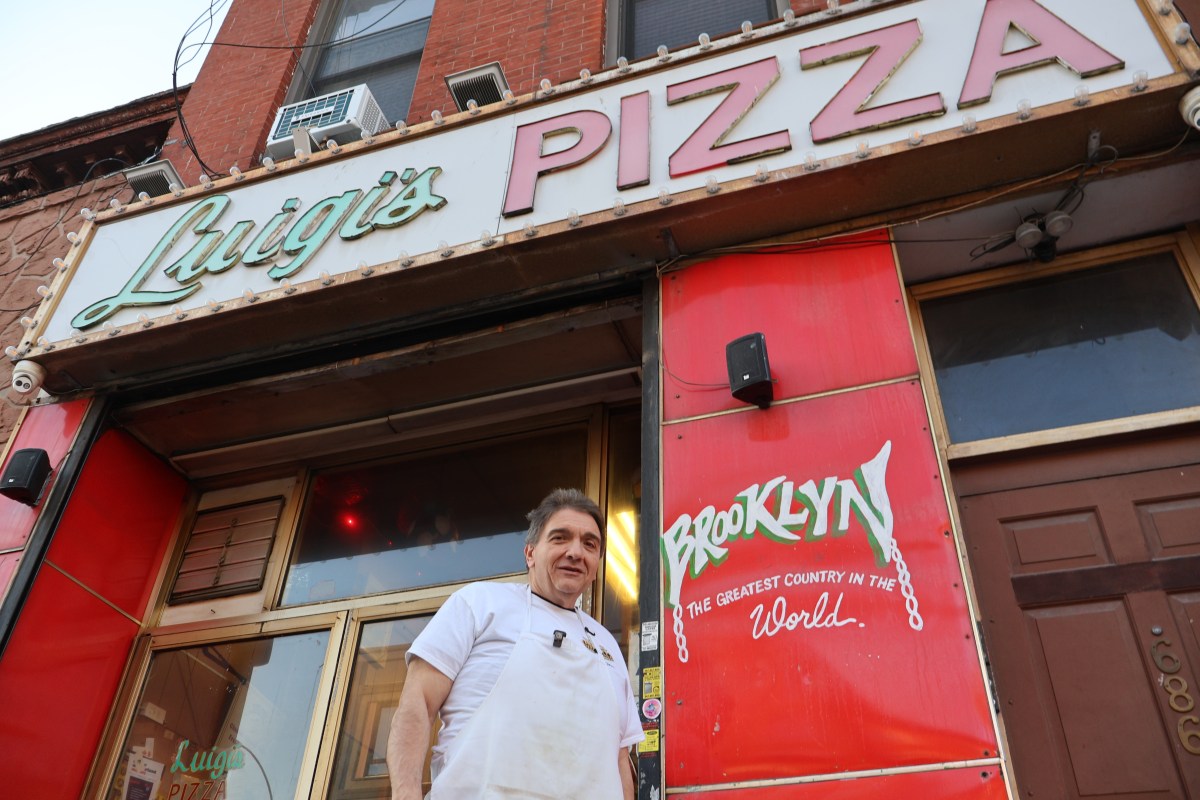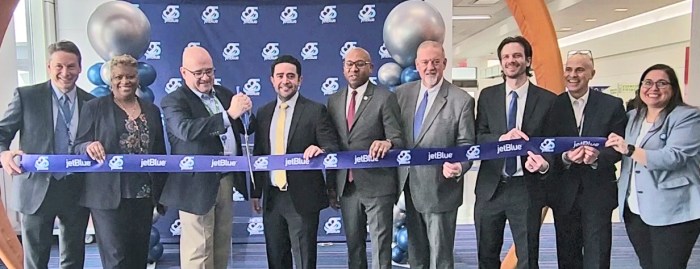Belmont Park’s lucrative fall championship meet will be run this September and October at Aqueduct Racetrack in Queens, as the New York Racing Association (NYRA) embarks on a long-anticipated reconstruction plan at “Big Sandy.”
The racing circuit made the announcement Thursday while simultaneously releasing its stakes schedule for the “Belmont at the Big A” meeting, which will begin Sept. 15, ten days after the conclusion of the ongoing Saratoga meet.
Moving the fall meet to Aqueduct gives NYRA a full eight months to complete the first phase of the project: the construction of vehicular and pedestrian tunnels linking the backstretch to the 45-acre infield. This will “unlock” the spacious Belmont infield for the development of new areas for fans during major racing events such as the Belmont Stakes Racing Festival, as well as potential athletic fields for the nearby Floral Park community.
The tunnels will also give contractors easier access to Belmont Park’s 1 1/2-mile dirt track and the Widener and Inner Turf Courses within for the racing surfaces’ reconstruction, which will take place next summer.
“This investment in the future of Belmont Park will transform our racing operations and pave the way for a broader re-imagining of the facility,” said Dave O’Rourke, NYRA President and CEO. That reimagining may also include the installation of a synthetic racing surface within the turf courses in the future, according to NYRA.
The “Belmont at the Big A” meet marks the first time since the late 1960s that Aqueduct has hosted Belmont Park’s fall championship races. That change was also necessitated due to construction, as the old Belmont Park wooden grandstand was demolished and replaced with the facility that stands there today.
NYRA will begin its Belmont tunnel project on Aug. 3, requiring the closure of the main track and turf courses until next April. The project is anticipated to be completed in time for Belmont to host its spring/summer meet.
“The shift to Aqueduct this fall will minimize the overall impact on the racing schedule, and ensure continuity for the Belmont spring/summer meet and Belmont Stakes,” O’Rourke added. “We appreciate the patience of our horsemen and fans as we enter this period of transition at Belmont, and look forward to an exciting fall at the Big A.”
Racing during the “Belmont at the Big A” meet will take place Thursday through Sunday through Oct. 30. The 28-day meet includes a lucrative 41 stakes schedule with $9.9 million in purses; among the stakes races are four “Win and You’re In” qualifiers for the Breeders’ Cup at Keeneland this November.
The biggest races of the meet are the $1 million Jockey Club Derby for three-year-olds on the turf (Sept. 17); the $500,000 Woodward Stakes for older horses (Oct. 1); the $500,000 Champagne Stakes for two-year-olds (Oct. 1) and New York Showcase Day (Oct. 30), a program of eight stakes races for New York-breds.
NYRA is boosting purses and offering bonuses to horsemen so they can keep their ponies running at Aqueduct this fall, rather than ship them out of town.
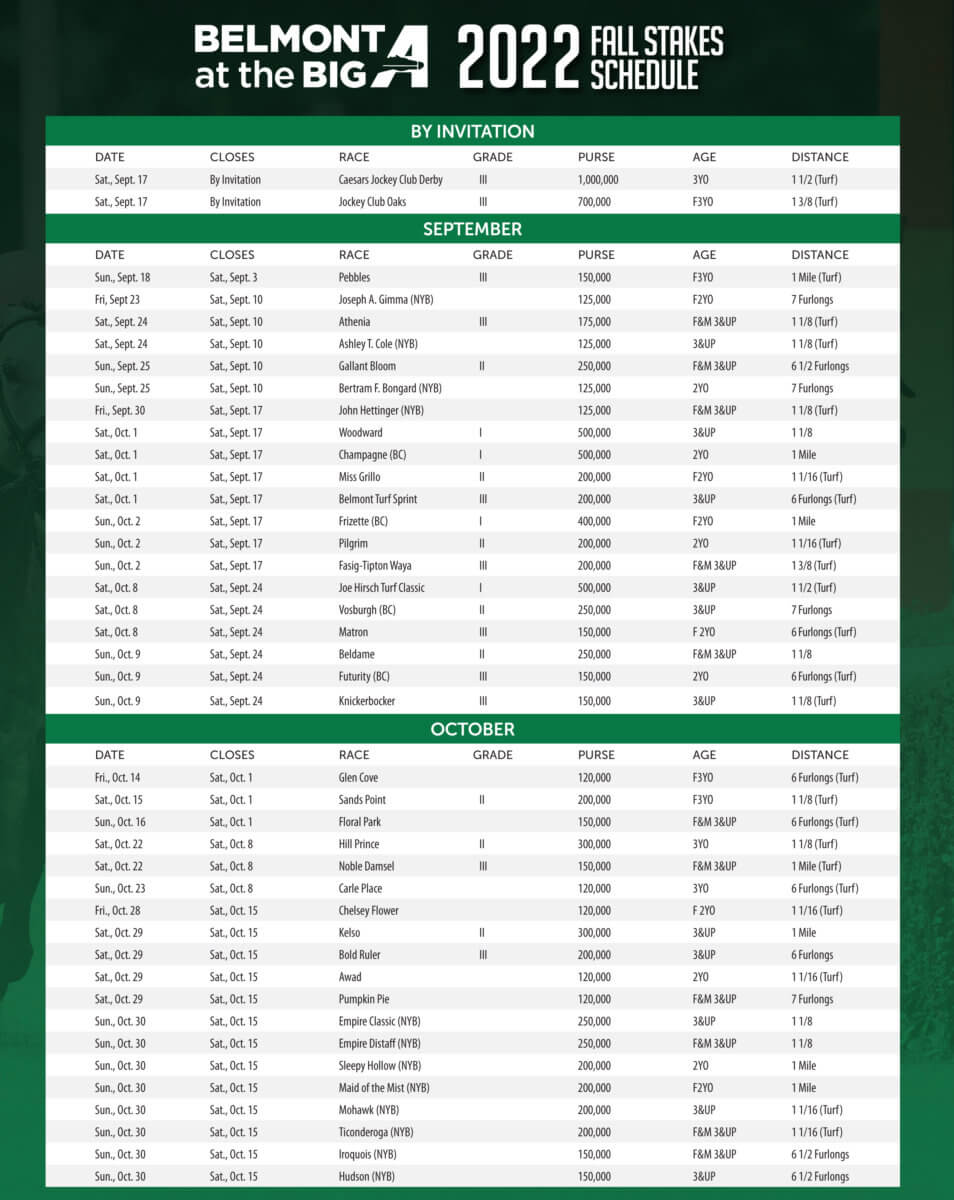
Bigger changes to come
Once next summer’s meet concludes at Belmont, NYRA will embark on reconstructing the “Big Sandy” main track and turf courses, which haven’t experienced major reconstruction since the 1970s and have had drainage issues in recent years.
In recent years, NYRA made major track improvements at Aqueduct and Saratoga, and it’s anticipated that the new Belmont Park racing surface will get the same treatment — including safety rails on the perimeter and a limestone base to allow for better draining.
The tunnel and track construction projects are the first critical steps in the anticipated renovation of Belmont Park. NYRA seeks to either raze or renovate the existing grandstand and provide new modern amenities to better accommodate fans at the Belmont Stakes Racing Festival and to once again attract the Breeders’ Cup World Championship, the fall racing event it last hosted back in 2005.
The racing outfit sought a $400 million bond issue from the state to move ahead with redevelopment of the Belmont grandstand, but was denied by the state legislature this past session.
Rebuilding Belmont may eventually come at the cost of shuttering Aqueduct Racetrack years from now. In a June interview with Bloodhorse, NYRA Chair Marc Holliday indicated that investing in Belmont Park’s full renovations would “free up of Aqueduct Racetrack in a way that can unlock tremendous value for the state by not having the duplicity of racing operations encumbering two state-owned tracks.”
Along with making the grandstand weatherproof, Belmont Park would also need to either winterize the existing main track and/or build a synthetic surface on the infield to allow for year-round racing.
This summer, NYRA will get a trial run at synthetic surface by installing a Tapeta surface on the quarter-mile pony training track, located adjacent to its one-mile dirt training track.
Tapeta is an all-weather surface made up of a mixture of silica sand, wax and fibers, and is designed to simulate the feel of turf beneath a horse’s hooves, with the goal of making it safer for horses to run. It is used at a number of thoroughbred racetracks around the country, including Gulfstream Park in Florida, Turfway Park in Kentucky and Golden Gate Fields in California.



